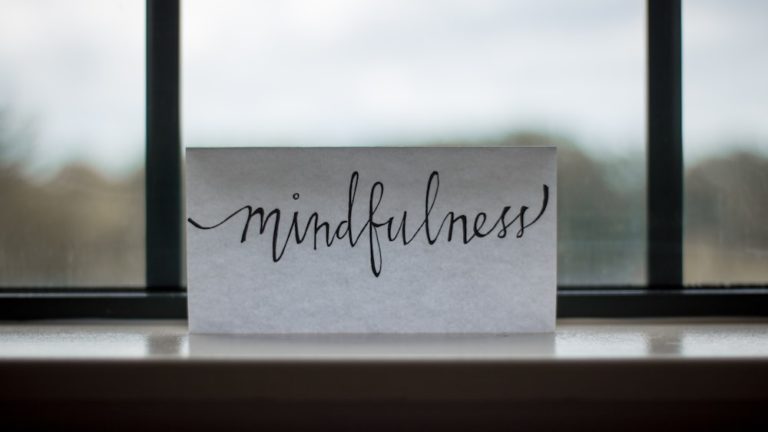9 Ways To Master 5 Senses Mindfulness For Inner Calm
Welcome to the world of 5 senses mindfulness! In today’s fast-paced and chaotic world, we often overlook the importance of engaging with our senses and being present in the moment. This article will explore the art of mastering 5 senses mindfulness for inner calm, and guide you on the path towards a more balanced and aware existence.
Imagine a life where you can truly connect with your surroundings and appreciate the beauty of the world through all your senses. Sounds amazing, right? Well, that’s the power of 5 senses mindfulness. So, prepare to embark on a journey that will not only enhance your self-awareness but also improve your overall well-being.
The Importance of 5 Senses Mindfulness
The practice of 5 senses mindfulness has numerous benefits that can significantly improve the quality of your life. Some of these benefits include enhancing self-awareness, reducing stress and anxiety, improving focus and concentration, and boosting emotional well-being. Let’s dive deeper into each of these areas and learn how 5 senses mindfulness can help you achieve inner calm.
1. Enhancing self-awareness
The first step towards a more mindful life is cultivating self-awareness. By practicing 5 senses mindfulness, you become more in tune with your body and mind, allowing you to recognize your thoughts, emotions, and physical sensations. This heightened self-awareness enables you to:
- Identify and understand your emotional triggers
- Recognize patterns in your behavior
- Make more informed decisions and choices
When you’re aware of your thoughts and emotions, you can better manage them and respond to situations in a healthier, more constructive manner.

Cultivating self-awareness through 5 senses mindfulness allows you to recognize your thoughts, emotions, and physical sensations, leading to better management and control of them.
2. Reducing stress and anxiety
Stress and anxiety are common ailments in today’s society, but 5 senses mindfulness can help alleviate these burdens. By focusing on your senses and being present in the moment, you can:
- Redirect your attention away from anxiety-inducing thoughts
- Calm your mind and body
- Promote relaxation and inner peace
In fact, research has shown that mindfulness practices, such as engaging with the 5 senses, can significantly reduce stress and anxiety levels, leading to a more relaxed and composed state of mind.
3. Improving focus and concentration
In our modern, technology-driven world, it’s easy to get lost in the sea of distractions and notifications. However, practicing 5 senses mindfulness can help improve your focus and concentration by:
- Training your brain to pay attention to the present moment
- Reducing mental clutter and distractions
- Enhancing your ability to stay on task and complete projects
So, by engaging with your senses and being mindful, you’ll find that your productivity and efficiency skyrocket, allowing you to achieve more in less time.
4. Boosting emotional well-being
When you practice 5 senses mindfulness, you not only improve your self-awareness, focus, and concentration, but you also boost your emotional well-being. This is achieved through:
- Developing a deeper connection with yourself and your emotions
- Cultivating gratitude and appreciation for the present moment
- Fostering a sense of inner peace and contentment
By engaging with your senses and being present in the moment, you can truly savor the beauty of life and experience greater happiness and satisfaction.
Practicing 5 Senses Mindfulness in Daily Life
Now that you understand the importance of 5 senses mindfulness, it’s time to explore how you can incorporate this practice into your daily life. From mindful breathing exercises to engaging with nature, there are numerous ways to cultivate mindfulness and achieve inner calm.
5. Mindful breathing exercises
One of the most effective ways to practice 5 senses mindfulness is through mindful breathing exercises. By focusing your attention on your breath, you can:
- Anchor yourself in the present moment
- Calm your mind and body
- Develop greater awareness of your physical sensations
To get started, try dedicating just a few minutes each day to focusing on your breath. Inhale deeply, filling your lungs with air, and then exhale slowly, releasing any tension or stress. By doing so, you’ll find yourself becoming more centered and present, paving the way for a more mindful life.
Mindful breathing exercises are an effective way to anchor yourself in the present moment, calm your mind and body, and develop greater awareness of your physical sensations.
6. Engaging with nature
Engaging with nature is a fantastic way to practice 5 senses mindfulness, as it offers an endless array of sensory experiences. When was the last time you took a moment to appreciate the beauty of your surroundings? The rustling of leaves, the scent of fresh flowers, the warmth of the sun’s rays on your skin – these are all invitations to be fully present in the moment.
- Try going for a mindful walk in a natural setting, such as a park or forest. As you walk, pay attention to the sights, sounds, smells, and sensations around you. Notice the way the ground feels beneath your feet, the texture of the bark on a tree, or the song of a nearby bird. By tuning into these sensory experiences, you’ll find your mind naturally becoming calmer and more focused.
7. Mindful eating
Mindful eating is a powerful way to bring 5 senses mindfulness into your daily life. It involves being fully present and aware of the food you consume, engaging all five senses to truly savor each bite. When was the last time you truly appreciated the flavors, textures, and aromas of a meal?
- Challenge yourself to eat a meal mindfully by slowing down and savoring each bite. Notice the colors and presentation of your food, the aroma as you bring a bite to your mouth, and the complex flavors as you chew. Pay attention to the texture and temperature, and even the sounds your food makes as you chew. This practice not only enhances your enjoyment of food but can also help prevent overeating and improve digestion.
8. Incorporating mindfulness into daily routines
Incorporating 5 senses mindfulness into your daily routines can be as simple as transforming ordinary activities into opportunities for mindful awareness. Think about the tasks you do every day, such as brushing your teeth, washing dishes, or commuting to work. How often do you find your mind wandering during these tasks?

- Try turning these routine activities into mindfulness practices by engaging your senses and bringing your full attention to the task at hand. For example, when brushing your teeth, notice the sensation of the toothbrush against your gums, the taste and texture of the toothpaste, and the sound of the bristles moving across your teeth. By doing this, you’ll cultivate a more mindful and present way of living.
9. Using technology to support mindfulness practice
While technology can sometimes be a source of distraction, it can also be a valuable tool for supporting mindfulness practice. There are numerous apps and resources available to help you develop and maintain your 5 senses mindfulness practice.
- Explore mindfulness apps that offer guided meditations, mindfulness exercises, and reminders to help you stay focused and present throughout the day. Examples include Headspace, Calm, and Insight Timer.
- Consider using technology to track your progress in your mindfulness practice. Apps like Moodistory or Daylio can help you log your daily mindfulness activities, allowing you to see patterns, trends, and improvements over time.
Overcoming Challenges in 5 Senses Mindfulness
Practicing 5 senses mindfulness comes with its own set of challenges, but with persistence and the right strategies, you can overcome these obstacles and enjoy the numerous benefits of this practice.
Addressing common obstacles
Common obstacles in 5 senses mindfulness practice include distraction, impatience, and judgment. It’s essential to recognize and address these obstacles to maintain a successful practice.
- Distraction: Our minds are constantly bombarded with thoughts and stimuli, making it difficult to stay focused. When you notice your mind wandering, gently bring your attention back to your senses and the present moment.
- Impatience: Cultivating mindfulness takes time and practice. Resist the urge to rush or expect immediate results. Remember, the process of developing mindfulness is just as important as the end goal.
To maintain a successful mindfulness practice, it’s essential to recognize and address common obstacles such as distraction and impatience, reminding yourself that the process of cultivating mindfulness is just as important as the end goal.
Developing consistency and discipline
Developing consistency and discipline in your 5 senses mindfulness practice is crucial for reaping its benefits. Like any skill, mindfulness requires regular practice and commitment.
- Create a daily routine for your mindfulness practice, whether it’s setting aside time for meditation, engaging in mindful activities, or using apps to support your practice.
- Be patient with yourself and recognize that progress may be slow. Embrace the journey and celebrate small victories along the way. With dedication and persistence, you’ll find your mindfulness practice becoming an integral part of your life.
Adjusting expectations and embracing imperfection
When it comes to 5 senses mindfulness, it’s essential to adjust your expectations and embrace imperfection. Remember, mindfulness is a journey, not a destination. You might not be able to achieve a state of complete inner calm every time, and that’s okay. The key is to be patient with yourself and understand that it takes time and practice to develop mindfulness skills. Don’t be too hard on yourself if you find your mind wandering or if you struggle to stay present in the moment. Instead, acknowledge these challenges as part of the process and keep trying. After all, it’s through overcoming these obstacles that we grow and learn.
FAQs
1. How long does it take to see the benefits of 5 senses mindfulness?
To see the benefits of 5 senses mindfulness varies for each individual, depending on factors such as how often you practice and your natural inclination towards mindfulness. However, many people report noticing improvements in their overall well-being and stress levels within a few weeks of consistent practice. The more you practice, the more you will likely experience the benefits of this powerful technique.
2. Can I practice 5 senses mindfulness if I have a sensory impairment?
Yes, you can practice 5 senses mindfulness even if you have a sensory impairment. The key is to focus on the senses that are available to you and adapt mindfulness exercises to suit your needs. For example, if you have a hearing impairment, you can concentrate more on your sense of touch, taste, and smell. Mindfulness is about being present and aware of your body and surroundings, so any sensory input can be used to enhance your practice.
3. How can I make 5 senses mindfulness a habit?
To make 5 senses mindfulness a habit, it’s essential to create a consistent routine that fits into your daily schedule. Start by setting aside a specific time each day for mindfulness exercises, such as during your morning routine or before bedtime. You can also incorporate mindfulness into everyday activities like walking, eating, or even taking a shower. The key is to be consistent and patient, as building a new habit takes time and effort.
4. Are there any risks or side effects associated with 5 senses mindfulness?
In general, practicing 5 senses mindfulness is considered safe and has no significant risks or side effects. However, it’s essential to listen to your body and mind during mindfulness exercises. If you experience any discomfort or distress, it’s important to stop the practice and seek guidance from a qualified professional. Remember, mindfulness is intended to enhance your well-being, not cause harm or discomfort.
Conclusion
5 senses mindfulness is a powerful tool for achieving inner calm and improving overall well-being. By focusing on enhancing self-awareness, reducing stress and anxiety, and boosting emotional well-being, you can transform your life and experience the benefits of mindfulness. Remember to practice mindfulness regularly and incorporate it into your daily routines for the best results.
Overcoming challenges in 5 senses mindfulness is crucial for growth and development. Be patient with yourself, adjust your expectations, and embrace imperfection as part of the journey. Don’t forget to seek support and guidance when needed, and always prioritize your well-being.
Finally, don’t hesitate to explore the FAQs to address any concerns or questions you might have about 5 senses mindfulness. With perseverance and dedication, you can master this incredible skill and experience the profound benefits it has to offer. So, embark on this journey and discover the power of 5 senses mindfulness for inner calm and self-improvement.
I wish you the best! Fabian.
Share with your Friends:






